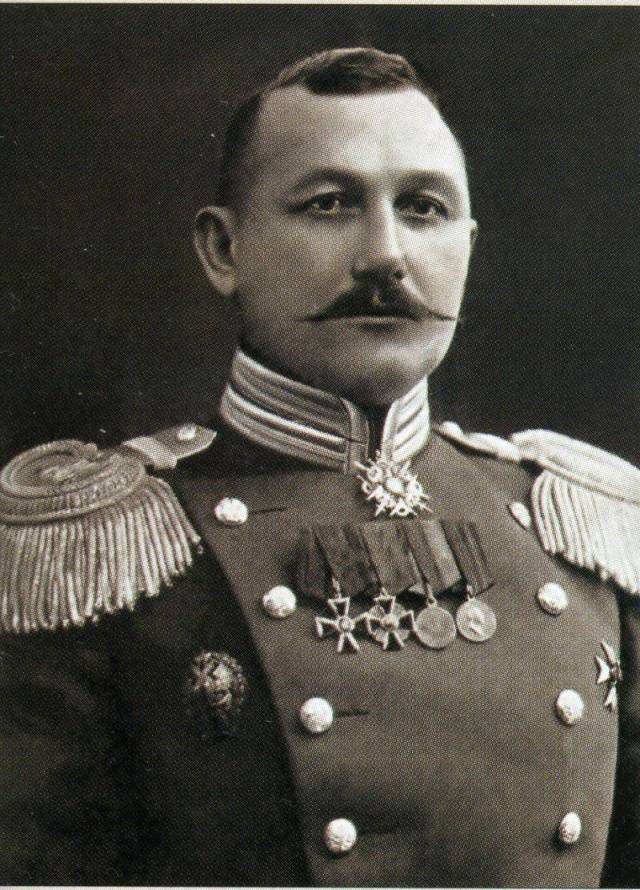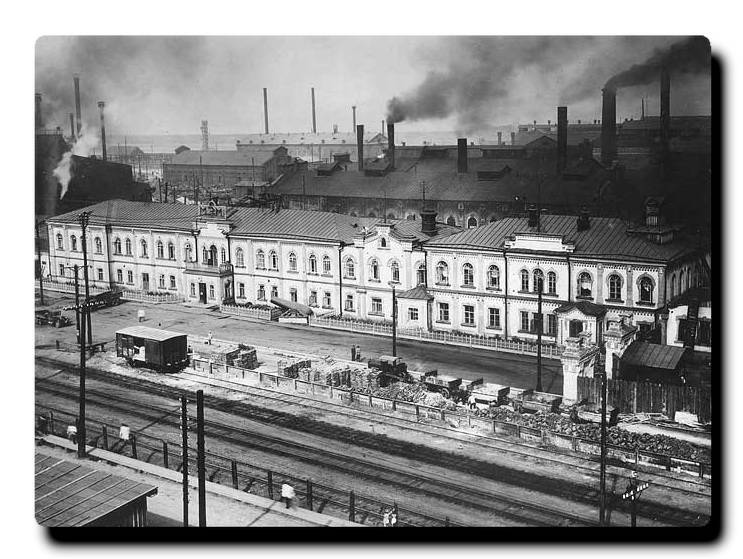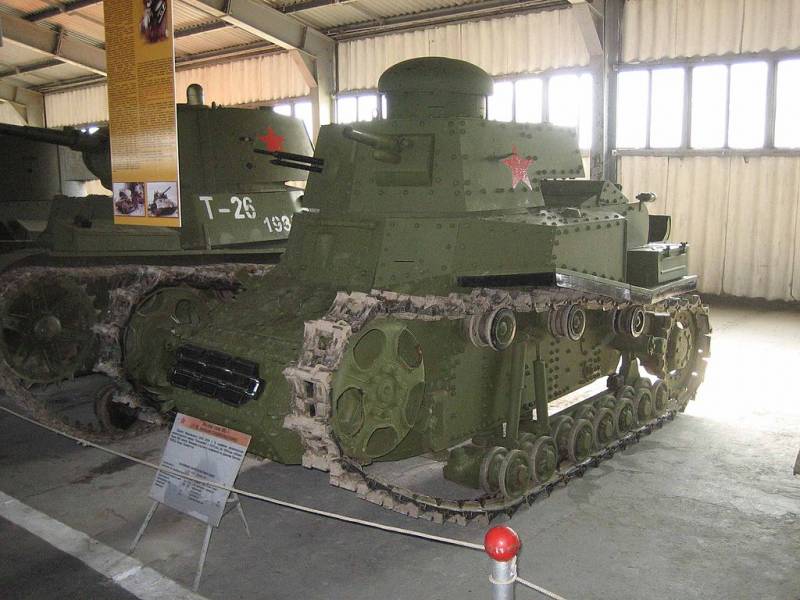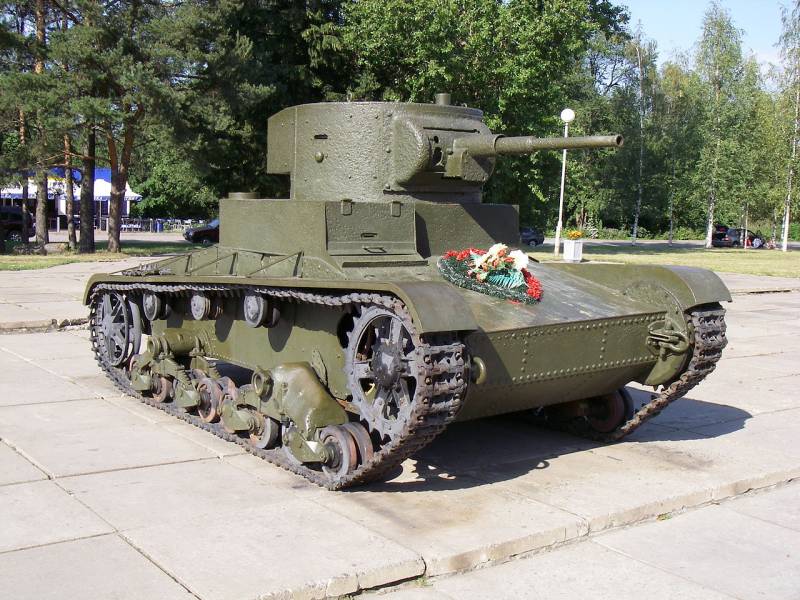“We will press and help - they will adapt!” The Soviet Union masters the production of tanks
Total deficit
The practice of attracting foreign developments for the development of our own technological capacities, which we spoke about in the first part of the story, was widespread even in tsarist Russia.

Consider the example of supplying the Russian army with scarce vehicles. By August 1914 of the year in the Russian Empire there were a little more than 700 cars involved for the needs of the military. The Russian-Baltic Carriage Works could produce no more than 130 cars a year, while the vast majority of them were passenger cars that were little demanded by the army. As a result, several years later, I had to turn to my Western colleagues for help, whose automotive industry was an order of magnitude more perfect. The procurement commission, led by Colonel Peter Ivanovich Sekretev, commander of the spare automobile company, set off for the UK in September 1914 to replenish the army with new equipment.
They planned to buy trucks, cars, special equipment, as well as armored cars. It is noteworthy that among the special requirements of the Russian commission was the presence of an armored roof and two machine guns rotating in different towers. In those days, neither in France nor in England could offer anything like this in a ready-made form, and only with Austin Motor did Petr Sekretev’s team manage to agree on the development of an armored car of the necessary design. In fact, only 48 of the “Austins” corresponded to the requirements of the Russian army - in France it was already necessary to purchase what was. And there were only 40 armored Renaults with an open roof and one single machine gun.
Why this story preceded by a story about the tank construction of the Soviet period? It allows us to understand the fundamental difference in the approaches of the government of Nicholas II and the young Soviet republic. If in the first case, the main goal was to simply saturate a catastrophically lagging army with military equipment, then in the USSR they tried to purchase technologies and samples worthy of borrowing, and sometimes even outright copying. And if we compare the effectiveness of the missions of Innokenty Khalepsky (his team went to buy armored vehicles for the USSR in 1929, about which he told first part of the story) and Peter Sekretev, it turns out that the Tsar’s colonel was much “more successful” - in total, 1422 cars were bought in Europe. However, no attempts were made to reduce the qualitative and quantitative lag behind the West in automotive technology in tsarist Russia.
The development in the Soviet Union of armored vehicles acquired in the USA and Europe proceeded with a creak - there were not enough qualified specialists or the corresponding technological equipment. A separate problem was the obviously impossible tasks that the country's leadership pitted before the factories. What was the reason for this? First of all, with the urgent need to mobilize military production - most developed foreign countries regarded the young Soviet republic as a dangerous breeding ground for the "communist plague." Also, one cannot discount the special approach of the USSR leadership to the formation of work plans. Stalin once wrote to Voroshilov about this:
The outcome of this approach was the constant disruption of the state defense order, a high proportion of manufacturing defects, and also an emergency mode of operation. Naturally, for failure to fulfill previously unattainable plans, the relevant structures searched and found those responsible with all the ensuing consequences.
In this regard, the history of the development of the production of the T-18 (MS-1) tank at the Bolshevik Leningrad plant in the first half of the 1927 of the year will be very remarkable.
The site for the assembly of a modernized version of the French Renault FC-1, the design of which refers us to the times of the First World War, was not chosen by chance. Prior to this, aircraft engines and tractors had already been made at the Bolshevik, there was no experience whatsoever. It was here that in the special workshop the first specialized tank production in the USSR appeared, which was later transformed into the factory No.174 named after K.E. Voroshilova. However, the tank special workshop was built only at the end of the 1929 of the year, and before that, the T-18 had to be assembled practically “on the knee” - on extremely worn-out equipment of imperial times. In 1927-1928 were able to produce only 23 tanks using this workaround technology, and the next fiscal year they added another 85 vehicles with a big delay. The authorities were not satisfied with such a pace, and it was decided to transfer part of the production of tanks to Perm, to the Motovilikhinsky machine-building plant, which had previously been engaged in cannon production.

But due to the "small number of technical personnel in tank building" nothing sensible came of this. This was realized only in the 1931 year, when the Revolutionary Military Council decided:
The OGPU realized this even earlier and began to act. In the case of sabotage, the head of the Main Military-Industrial Directorate, Vadim Sergeyevich Mikhailov, who had the rank of major general before the revolution, was arrested. Together with him, by October 1929, 91 people were found under investigation, who were accused of founding a counterrevolutionary organization aimed at disrupting the country's defenses by wrecking in the military industry. Five people under investigation, including V. S. Mikhailov, were shot, the rest were given different terms of imprisonment. In fact, since the end of the 20's, the fight against wrecking in the military industry in general and in tank building in particular has become an integral part of the emergence of a young industry. And this topic, of course, requires a separate study and narration.
From inch to meter
The most serious problem in mastering the production of “creatively rethought” samples of foreign technology was the conversion of the inch measurement system to the metric one. Firstly, it was a long process, taking away a lot of time in a constant race. And secondly, even if the recounting was carried out correctly, errors still remained. It was necessary to translate inches into metric units with rounding up or down, which, of course, affected the quality of manufacturing units and parts. The tank builders, when mastering the production of BT series tanks, initially to save time generally decided not to translate the drawings into centimeters and millimeters. This was largely due to the serious problems that engineers encountered in mastering the production of the first T-26 series. With this machine, which was based on the base of the 6-ton “Vickers”, in general there were many difficulties. The first copies came from the Leningrad plant in the 1931 year, while the government initially put in the plan for the year immediately five hundred armored vehicles. Naturally, it was impossible to collect such a gigantic volume, so the bar was reduced to 300 tanks, which they also did not collect. Related enterprises did not keep up with the supply of components, and the first fifteen T-26 were welded from ordinary steel - the Izhora plant could not issue high-quality armor. A rifle armor-piercing bullet pierced such a tank from a distance of 200 meters. When at the beginning of the 1932 of the year they rushed to the Izhora plant with a check, it turned out that the percentage of rejects during cementation of armor plates reaches 90%! The failure also happened with optical instruments - in the domestic industry of that time there simply were no production technologies for analogues of British sights. Therefore, they decided to install conventional mechanical guidance devices. Motors for tanks were also a weak point in the production chain, which again forced to be purchased from the British. At the same time, the cost of the first Soviet-made T-26 exceeded the price of those purchased in the UK twice! As a result, all 15 of the first “unarmored” tanks were left as training aids for tank schools, and by the end of the 1931 of the whole year they managed to assemble 120 vehicles, of which only 100 was allowed for military operation. The leading part of the leadership was traditionally attributed the lion's share of all production shortcomings to subversive activities of enemies of the people and sabotage. On the other hand, the tank industry in general and the Voroshilov Leningrad Plant in particular received expensive foreign machine tools in the first place. Often this was done at the expense of the equipment of civilian enterprises.
But the further history of the Voroshilov plant, where the light T-26 was also produced, cannot boast of high quality products. In April 1934, the proportion of rejects on the crankcase of the T-26 engine reached 60%, and the pistons were defective in half the cases. At the beginning of the 1937 year, none of the tested engines was able to work out the warranty period (100 hours on the stand and 200 hours on the tank), which even forced the military representative to stop receiving products. For five months of the same year, the plant issued, instead of the planned 500 vehicles, all 17 light tanks. It is noteworthy that somewhere in this period, the wording of wrecking as the main cause of industrial defects began to disappear from the plant’s documentation. However, the problems remained and they had to be solved in the shortest possible time.
To be continued ...


Information